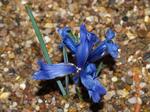 How to Grow, Propagate and Care for Irises
How to Grow, Propagate and Care for Irises
For the professional grower or the backyard enthusiast
This is a valuable course for anyone with a serious interest in irises either as a commercial grower or an enthusiastic home collector. You will gain an in-depth appreciation of the iris, how to grow them to achieve optimum results and the identification of different varieties of irises. Significant sections are included on landscaping with irises, hybridisation and propagation, harvest, post-harvest treatments, achieving and assessing quality, and exhibiting the flowers.